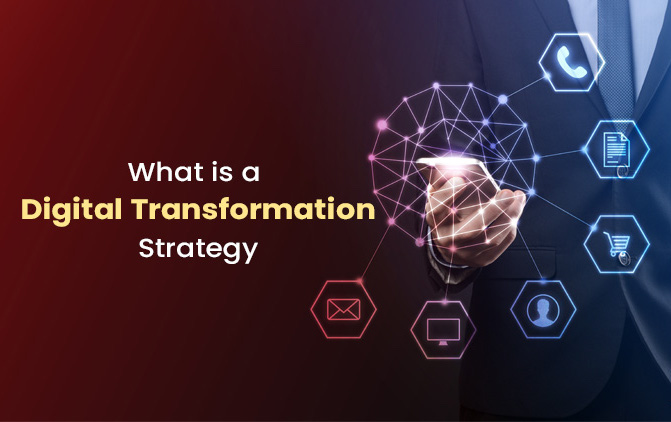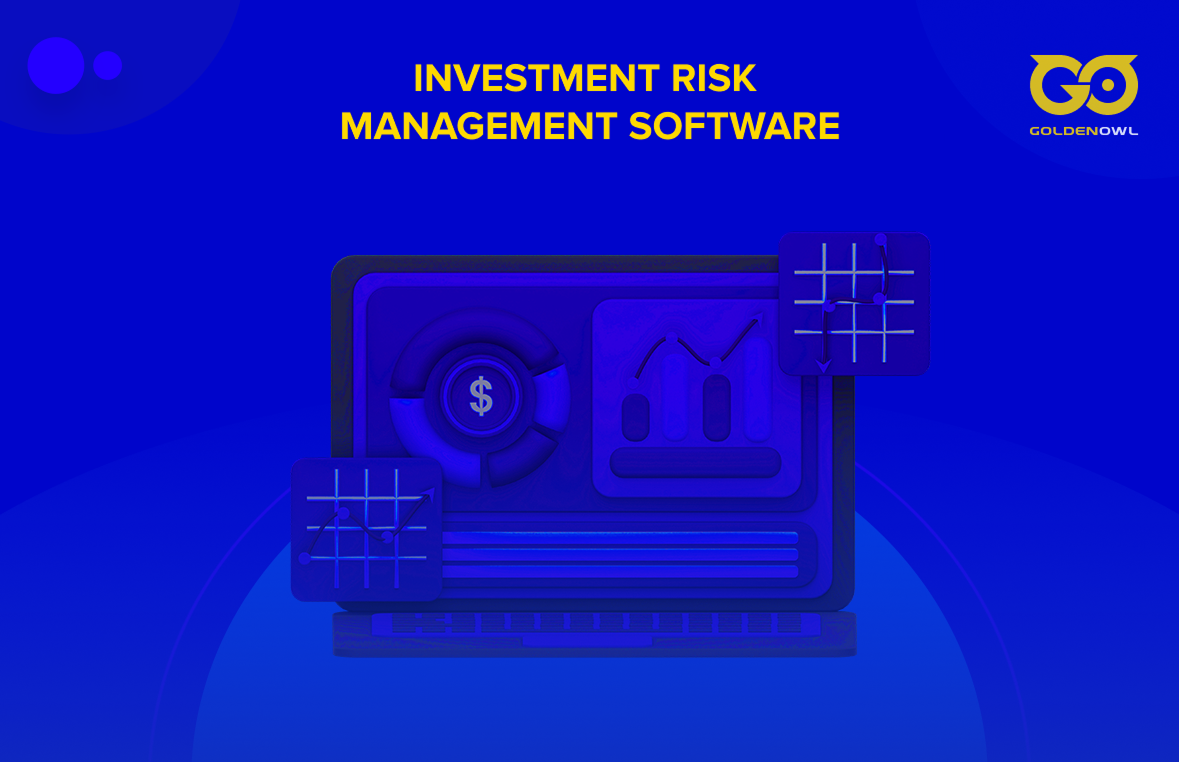Learn how to develop a digital transformation strategy for your organization in six easy steps. Find out what it is, why it matters, and its benefits.
In today’s rapidly evolving landscape, where technology constantly redefines the game, standing still is simply not an option. Businesses that embrace digital transformation–the strategic integration of technology across all facets of their operations–are poised for growth, agility, and a competitive edge.
However, where do you start? In this guide, we’ll outline a winning digital transformation strategy, empowering you to navigate the journey and emerge triumphant.
What Is a Digital Transformation Strategy?

Simply put, this is your roadmap for harnessing the power of technology to fundamentally reshape your business. It’s not just about implementing new tools or software. It’s about reimagining your entire organization, from how you interact with customers to how you operate internally.
- Customer-centricity becomes your guiding principle: Empathy and data-driven insights fuel personalized experiences, fostering deeper connections and loyalty.
- Operational efficiency is no longer a luxury but a necessity: Automation and streamlined processes free up resources for innovation and growth.
- Data becomes your most valuable asset: Analytics illuminate hidden insights, empowering informed decision-making and unlocking new possibilities.
- Agility replaces rigidity: Embracing change and experimentation allows you to adapt to evolving markets and customer needs.
- Culture shifts from siloed to collaborative: Breaking down barriers fosters cross-functional teams and fuels creativity.
In essence, a digital transformation strategy is a blueprint for building a future-proof business. You’re using technology to unlock new opportunities, gain a competitive edge, and ultimately thrive in the digital age.
Why Is Having a Digital Transformation Strategy Important?

In the age of digital disruption, embracing a static approach is akin to sailing a rickety wooden ship in a hurricane. Without a clear and well-defined digital transformation strategy, your business risks getting swept away by the relentless waves of innovation and changing customer expectations. Here’s why having a robust strategy is crucial for navigating the digital ocean:
- Stay ahead of the curve. The digital landscape is constantly evolving, with new technologies and trends emerging at breakneck speed. Competitors are constantly innovating and adapting. Without a strategic plan, you’ll struggle to keep up. It acts as your compass, guiding you toward the most promising opportunities and ensuring you’re not left behind.
- Enhance Customer Experience. Today’s digitally savvy customers demand seamless, personalized experiences across all touchpoints. A well-crafted strategy prioritizes customer-centricity, helping you leverage technology to create deeper connections, deliver exceptional service, and build lasting loyalty.
- Boost Operational Efficiency. Outdated systems and manual processes can severely impact the productivity and profitability of a business. A digital transformation strategy aims to streamline operations by leveraging automation, data-driven insights, and process optimization. This creates space for innovation and enables your team to focus on strategic initiatives that drive growth.
- Unleash Innovation and Agility. It’s crucial to be adaptable and constantly experiment with new ideas. Adopting a digital transformation strategy can foster a culture of innovation that encourages your team to think creatively, embrace change, and respond swiftly to changes in the market. With this agility, you can always take advantage of new opportunities and stay one step ahead of the competition.
- Create a Competitive Advantage. In today’s world, where the market is flooded with similar products, standing out from the crowd is crucial. By implementing an effective strategy, you can unlock new possibilities to create unique offerings, optimize your value proposition, and differentiate yourself from your competitors. This competitive advantage can lead to increased market share, higher customer satisfaction, and long-term growth.
How to Develop a Digital Transformation Strategy

Current State Assessment: Understanding the Digital Landscape
A successful voyage requires a thorough understanding of your starting point. Take stock of your current digital maturity, evaluating your technology infrastructure, data management practices, business processes, and workforce skills. Identify areas of strength to leverage and weaknesses to address. A SWOT analysis can provide valuable insights into your internal strengths and weaknesses, as well as external opportunities and threats.
Vision and Goals: Setting the Course for Digital Excellence
Before setting sail, you need a clear destination. Define your vision for the future. How will digital tools and technologies shape your business? Do you aim to deliver hyper-personalized customer experiences, revolutionize operational efficiency, or unlock a new wave of innovation? Once your vision is set, translate it into SMART goals, ensuring they’re Specific, Measurable, Attainable, Relevant, and Time-bound. For example, a SMART goal could be:
- Increase customer retention rate by 15% by the end of 2024 by enhancing customer experience through digital channels.
- Reduce operational costs by 20% by the end of 2025 by automating and optimizing business processes using technology.
- Increase innovation and agility by 30% by the end of 2026 by fostering a culture of experimentation and rapid adaptation to change.
Strategic Pillars: Charting the Path to Transformation
Now it’s time to choose your sails and chart your course. Your digital transformation strategy will likely revolve around key pillars such as:
- Customer-centricity. Put your customers at the helm of your journey. Focus on streamlining their interactions, delivering personalized experiences, and fostering deeper engagement across all channels.
- Data-driven Decision Making. Transform your data into a valuable treasure map. Leverage analytics and insights to make informed decisions, optimize operations, and predict future trends.
- Process Automation and Optimization. Eliminate manual drudgery with the power of technology. Streamline workflows, automate repetitive tasks, and free your team to focus on strategic initiatives.
- Innovation and Agility. Embrace a culture of experimentation and rapid iteration. Encourage creative thinking, foster cross-functional collaboration, and be ready to adapt to changing tides.
- Talent Development and Culture. Invest in your crew—your workforce. Equip them with the necessary skills and mindset to thrive in the digital age. Foster a culture of continuous learning, collaboration, and open communication.
Implementation Roadmap: Translating Strategy into Action
With your sails raised and course set, it’s time to learn how to implement a digital transformation strategy. Develop a detailed roadmap with clear timelines, milestones, and deliverables for each strategic pillar. It defines the sequence of initiatives, identifies key technologies and tools to be implemented, and assigns roles and responsibilities to stakeholders involved in the transformation process. The roadmap ensures a structured and coordinated approach to implementing your digital transformation strategy.
Change Management and Communication: Fostering a Culture of Transformation
Successful digital transformation requires a comprehensive change management plan that addresses employee concerns, ensures buy-in, and fosters a culture of innovation and adaptability. This plan outlines strategies for communicating the vision, benefits, and progress of the transformation journey to stakeholders at all levels. Effective communication channels are established to keep stakeholders informed, engaged, and motivated throughout the transformation process.
Monitoring and Evaluation: Measuring Success and Adapting to Change
Just like a sailor constantly checks the horizon, your digital transformation journey requires continuous monitoring and evaluation. Define key performance indicators (KPIs) aligned with your goals and track progress regularly. Be prepared to adapt your course if needed, ensuring you stay on track toward your desired destination.
Conclusion and a Helping Hand

As you reach the end of your digital transformation strategy, the horizon unfolds with endless possibilities. However, navigating the uncharted waters of change can be daunting. That’s where Golden Owl comes in—your trusted digital transformation strategy consulting partner.
With decades of experience and a team of seasoned digital natives, we understand the complexities of transformation. We’ll partner with you to craft a bespoke strategy:
- Tailored to your unique goals and challenges
- Fueled by data-driven insights and industry expertise
- Empowered by cutting-edge technologies and proven methodologies
Beyond charting the course, we’ll be your dedicated support system:
- Skillfully navigating change management and cultural shifts
- Providing ongoing guidance and training to empower your crew
- Continuously monitoring and optimizing your journey for maximum impact
Partnering with Golden Owl is an investment in your future. We don’t just help you reach your destination. We equip you with the skills and knowledge to navigate the ever-evolving digital landscape confidently.
So, hoist the sails and set your sights on the horizon. With Golden Owl by your side, your digital transformation journey will be a voyage of discovery, innovation, and, ultimately, unstoppable success.























